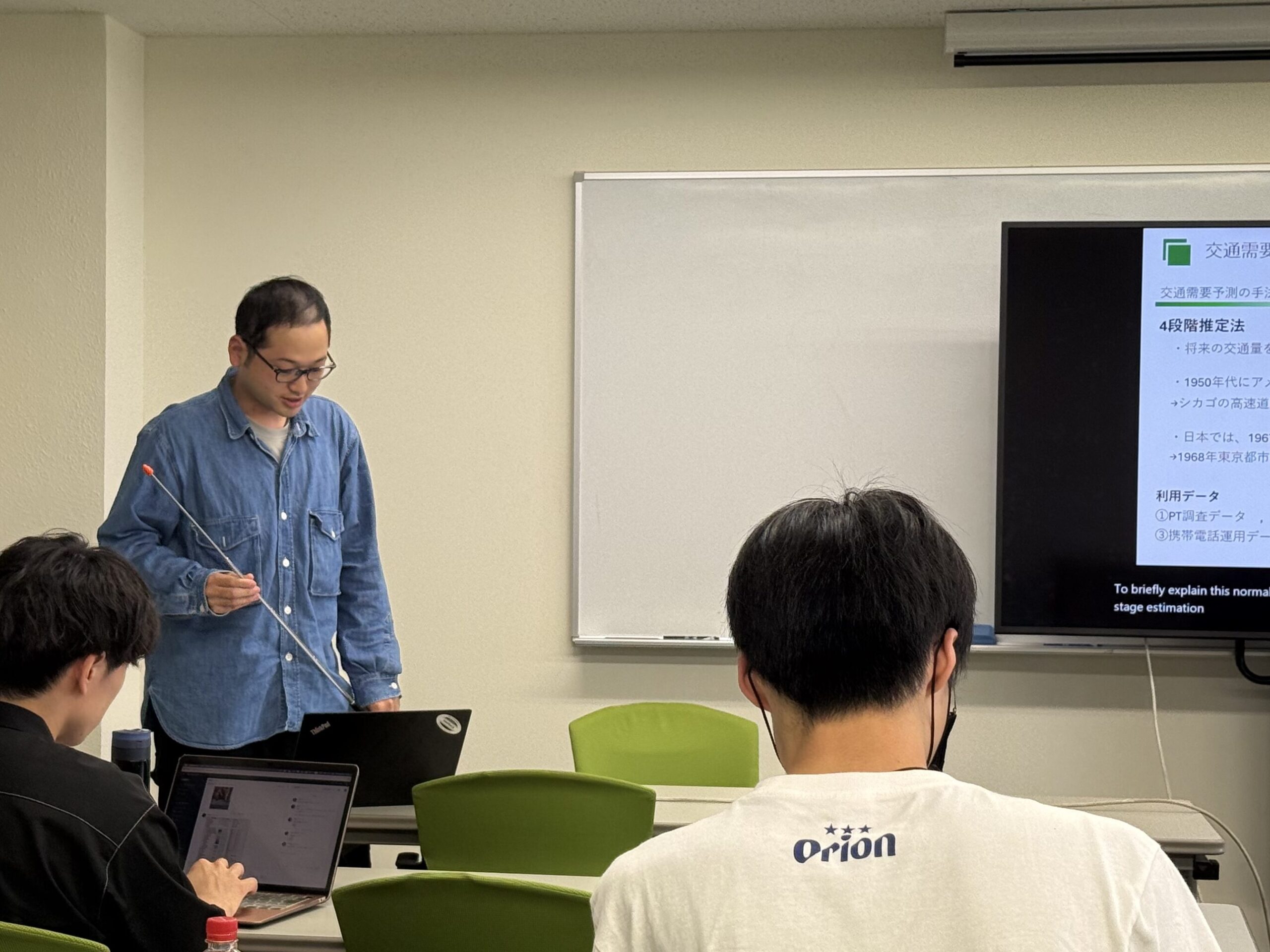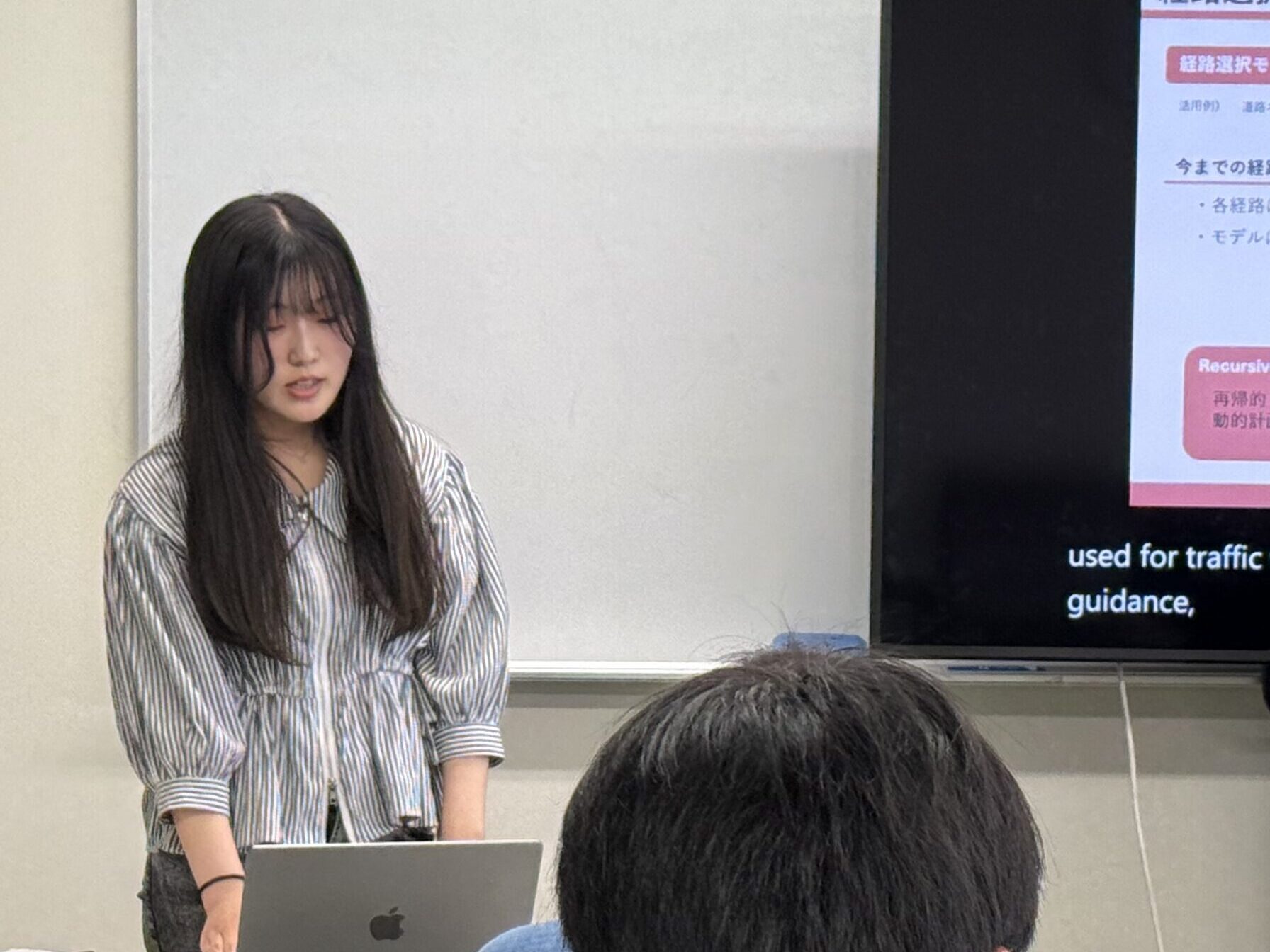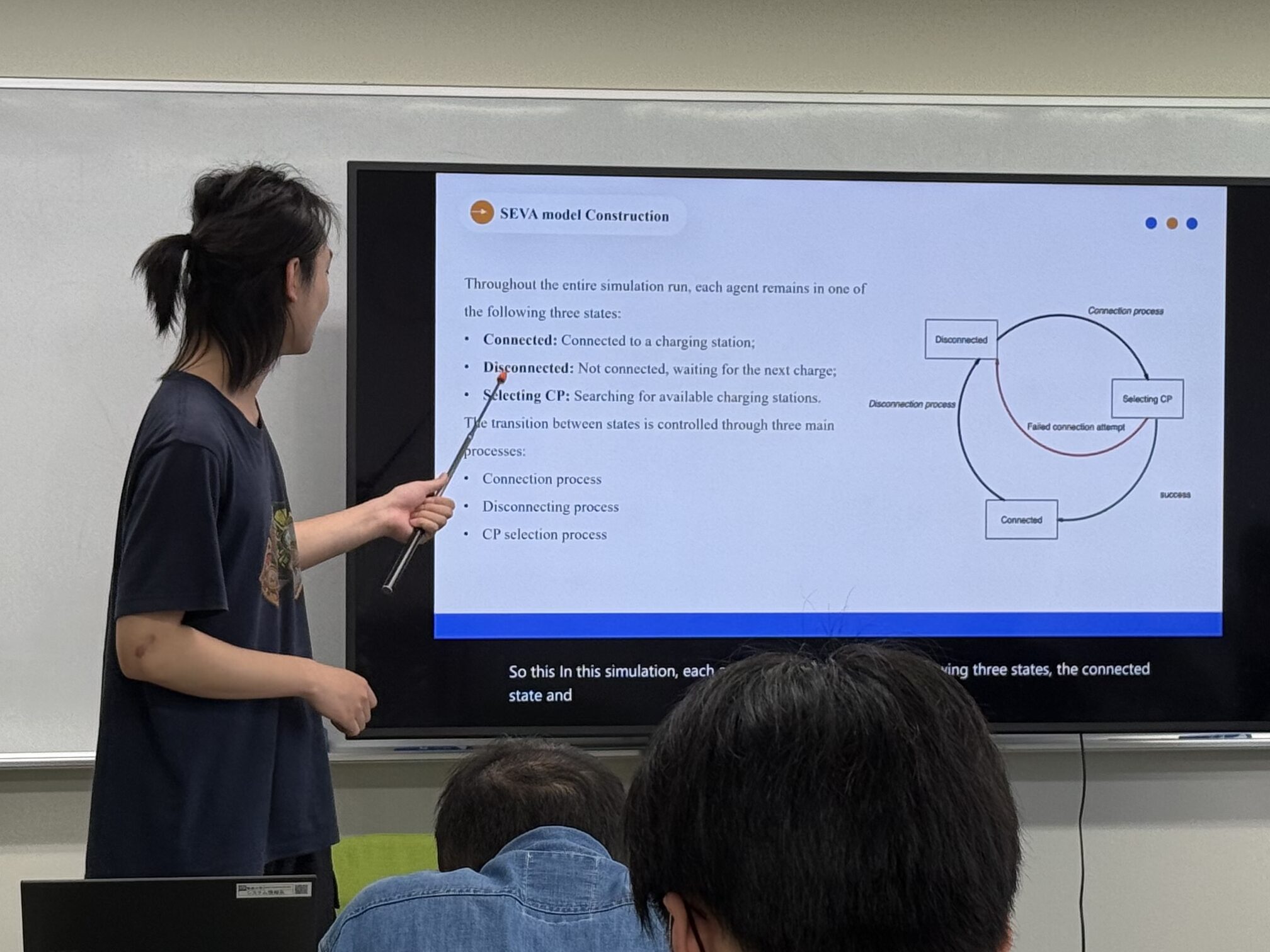

News
2025.05.20
5月も折り返しとなりました。夏至にむけて、明るい時間が延びてきましたね。
今回のゼミでは、M1柴田さんは「坂匠, 山本俊行, 薄井智貴: 携帯電話の位置情報集計データを用いた目的別時間帯別OD交通量の推定」に基づいて、PTデータと携帯電話GPSから取得した滞留人口データを融合し、より精度の高い交通情報データを生成するモデルについての発表を行いました。また、B4上杉さんは、「Fosgerau et. al. (2013) A link based network route choice model with unrestricted choice set, Transportation Research Part B, Vol. 56, pp. 70-80.」に基づいて、逐次的かつ再帰的な経路選択モデルについての発表を行いました。さらに、M1Haoyuさんは、「Helmus et. al. (2022) A validated agent-based model for stress testing charging infrastructure utilization, Transportation Research Part A: Policy and Practice Volume 159, May 2022, Pages 237-262.」に基づいて、EVユーザー行動シミュレーション(SEVA)モデルの構築と検証についての発表を行いました。
In this seminar, M1 Shibata gave a presentation on a model for generating more accurate traffic information data by fusing PT data with dwell population data obtained from cell phone GPS, based on “Takumi Saka, Toshiyuki Yamamoto, Tomotaka Usui: Estimation of OD traffic volume by time zone by purpose using aggregate location data of cell phones”. The presentation was based on “Estimation of OD traffic volume by time zone”. Also, B4 Uesugi presented “Fosgerau et. al. (2013) A link based network route choice model with unrestricted choice set, Transportation Research Part B, Vol. 56, pp. 70-80.” based on a sequential and recursive route choice model. In addition, M1Haoyu presented “Helmus et. al. (2022) A validated agent-based model for stress testing charging infrastructure utilization, Transportation Research Part A: Policy and Practice Volume 159, May 2022, Pages 237-262.”, he presented the construction and validation of an EV user behavior simulation (SEVA) model.
発表を担当したみなさんに、内容をまとめてもらいました!
We asked everyone who was in charge of the presentations to summarize the content!
柴田 (Shibata):
PT調査データとGPSをベースとした滞留人口データを融合させて、OD交通量の精度向上を目指すモデルについて説明しました。本研究で推定されたOD交通量は、通勤通学以外のトリップも考慮している事が既往研究との違いになっています。推定結果とPT調査データを比較して、集計ゾーンが中ゾーン単位の時に期待していた通りの結果が得られ、モデルの有用性が伺えました。論文が発表された2018年よりもデジタル化が進んでいるので、現在はより精度の高いOD交通量の推定が出来るのではないかと思います。
We have described a model that aims to improve the accuracy of OD traffic volume by fusing PT survey data with GPS-based population dwell time data. The OD traffic estimated in this study differs from previous studies in that it also takes into account trips other than commuting to and from work. Comparison of the estimated results with the PT survey data showed that the results were as expected when the aggregation zones were in mid-zone units, indicating the usefulness of the model. I believe that the model can now estimate OD traffic more accurately since it is more digitized than it was in 2018 when the paper was published.
上杉 (Uesugi):
Recursive Logit(RL)モデルは、リンク単位で経路を逐次的に選択する構造を持ち、全経路をあらかじめ列挙せずに経路選択を記述できる点で、従来のパスベースモデルと異なります。今回の発表ではベルマン方程式に基づいて目的地までの期待効用(価値関数)を定義し、選択確率を多項ロジット形式で導出するRLモデルの理論的枠組みを紹介しました。さらに、経路の重複による選択確率の過大評価に対しては、Link Sizeを用いた補正手法を導入し、シミュレーションおよびGPSデータを用いた実証により、パラメータの一貫した推定が可能であることを示しました。
The Recursive Logit (RL) model differs from conventional path-based models in that it has a structure that sequentially selects routes on a link-by-link basis and can describe route selection without enumerating all routes in advance. This presentation introduced the theoretical framework of the RL model, which defines the expected utility (value function) to the destination based on the Bellman equation and derives the selection probability in a multinomial logit format. Furthermore, for overestimation of choice probability due to route overlap, we introduced a correction method using Link Size, and demonstrated that consistent parameter estimation is possible through simulations and demonstrations using GPS data.
Haoyu:
The topic I presented this time was the construction and verification of the Simulation of Electric Vehicle Users’ Activities (SEVA) Model. The SEVA model is an Agent-Based Model that integrates real transaction data, behavior modeling, and multi-user interaction to build predictable future scenarios. The model is divided into three processes: connection, disconnection, and CP search. EV users are divided into habitual users and non-habitual users, and user decisions are divided into habitual decisions and adaptive decisions. The calculation error between simulated data and real data is used to evaluate the impact of different parameter settings on the accuracy of model results. The results show that the simulated data can fit the real data to a certain extent. In the stress test, it is shown that when the number of EV users or the proportion of non-habitual users changes, the model can still predict the occupancy of charging points to a certain extent.



written by Ryusuke Ono (B4)
Other news
↑